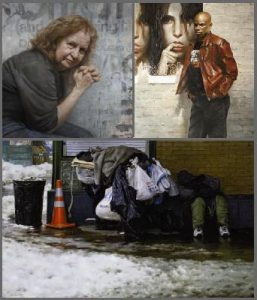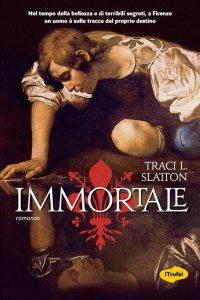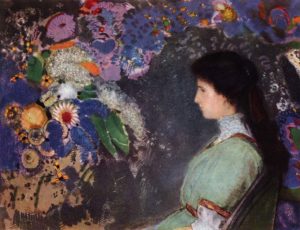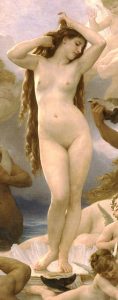“Hard Times: An Artist’s View” at the Salmagundi Club

TRACI L. SLATTON
Author Blog



The Italian cover of IMMORTAL


I got my ass kicked by Jacob Collins and Jim Cooper last week in a debate about Bouguereau.
This pleasant drubbing occurred at the Newington-Cropsey Foundation’s annual award dinner. This year painter and teacher Martha Erlebacher was honored.
It was an amazing evening. I was seated at a table with Martha Erlebacher, painter Philip Pearlstein, sculptor Sabin Howard, painter Jacob Collins, author Ann Brashares, and critic Jim Cooper. I was in the company of my artistic betters and was glad to be included. It was a treat to just listen to the conversations going on around me, let alone participate.
Of course, being me, with plenty of brash and engaged opinions, I had to contribute. Before dinner, I walked into a discussion Jacob Collins, one of the pre-eminent realist painters, was having with Jim Cooper, an art critic who runs Newington-Cropsey foundation. They were talking about the French Academicians.
Now, what is it with the French Academicians? Candy-assed painters, all surface sweetness and no structure, the lot of them. Look at Bouguereau. It’s like fluffy pink cotton candy. You might go into a diabetic coma. If I see one more painting of a shepherdess, I might barf. Why settle for sugary trifle when, with, say, Raphael or Fra Angelico, you get lamb chops with a side of asparagus and a hunk of chewy bread?
But no, Jacob and Jim said. I have a problem of taste. Jacob pointed out that we in the 21st century view Bouguereau through the lens of the myriad second-rate copyists who come after him. We can’t judge Bouguereau on his own terms because a thousand imitators followed him, and they did not have his immense talent.
This was a point well-taken, and has given me much to contemplate. Collins is no idiot. He certainly knows his way around a figure on canvas.
Jim, whom I adore, took me to task rather mercilessly. No one does hands like Bouguereau, he pointed out. Then he lectured me about Corot, with whom I have a love-hate relationship. I find Corot lazy and self-indulgent. He lacks the spiritual might of, say, Turner, while playing with light in similar fashion. But I do love to look at Corot’s paintings, despite him being one of those second rate French Academicians. But no, Corot is not an academician. Jim contends that Corot is the first of the great modernists.
It’s true, I have been brainwashed into revering the Renaissance by my Michelangelo-esque husband Sabin Howard, who, I might add, has also scolded me for dismissing Bouguereau. Et tu, Brute! This when I have to sneak off in secret to the MOMA to see the Edvard Munch exhibit, feeling as much shame as if I’d been meeting an adulterous lover! Before I come back into our apartment, I have to check myself and make sure I have no MOMA tickets or brochures sticking to my person, lest I draw the wrath of Sabin.
So, Bouguereau? Or not?

Last night my husband Sabin Howard & I attended the Newington-Cropsey Cultural Studies Center event honoring Martha Erlebacher. Martha is a realist painter and teacher. She taught Sabin twenty-seven years ago at the Philadelphia College of Art, and Sabin credits Martha and her deceased husband Walter Erlebacher for giving him the tools with which to create beautiful classical art with a powerful modern sensibility.
It was a wonderful, heart-warming evening. Sabin and I picked Martha up at her hotel to take her to the Lotos Club. In the taxi, I asked about Sabin as a young art student. He had, at one point, sported a gigantic thatch of a beard that would have made ZZ Top proud. Martha laughed, told me that in all her decades of teaching, there were maybe 5 students who had serious, big talent as artists. Sabin was one of them.
She and Sabin fell into a conversation about the draughtsmanship of drapery. I shut up and listened. When two artists of the caliber of Martha Erlebacher and Sabin Howard are discussing drawing, Leonardo, and the play of light, I want to hear every word that comes out of their mouths.
Martha and Walter had to re-invent the Renaissance system of proportions and of how to structure the figure. Walter Erlebacher had been a darling of the art world when he was an abstract expressionist showing at the Whitney Biennial; when he turned to the figure, to the human body, they dropped him. Sad commentary on the lack of taste and vision in the art haute-monde.
No one was doing realism and the figure back in the 60’s, when Walter and Martha understood that the human body is the greatest expression of truth, beauty, and narrative that human beings have. Against a condescending environment in the art world and a disembodied academia that had forgotten the perceptual power of art in favor of heady conceptual babble, they reinvented the proportional system. Martha was the painter and Walter was the sculptor.
“The sculpture of human form is the metaphor for the human desire to live forever,” Martha told me, as we spoke later in the evening. She was telling me how her husband was a genius.
“Don’t underestimate yourself and your contributions,” I said, gently. She shrugged. But this evening was about her. Sabin introduced her, and it was an intense moment for him, because he got to publicly express his gratitude to someone who had, literally, changed his life. Who had set him on the path he lives. “Martha gave us the manual on how to make awesome, powerful, visceral classical art!” he said, with tears in his eyes.
Noah Buchanan, a painter with a big following in California, also spoke. Noah related some funny anecdotes about Martha’s classes, how her words had stayed in the heads of her students who went on to be teachers themselves.
It was a joy to behold the praise being given to a woman who has made such a quiet, fierce contribution to the world, to both the joy and the discipline of art. She’s also a beautiful painter. The painting shown above is her “Dream of Eden.”

My husband Sabin Howard has become enthralled with the inspiring video lectures on ted.com. I understand why. Sabin and I are seekers of enlightenment, and that spark is the intention behind the website. I usually don’t mind when Sabin brings his MacbookPro to the bedroom and insists that I watch. Although I wish he wouldn’t do it on Monday nights at 9:00, because I am really invested in Jack Bauer saving the world.